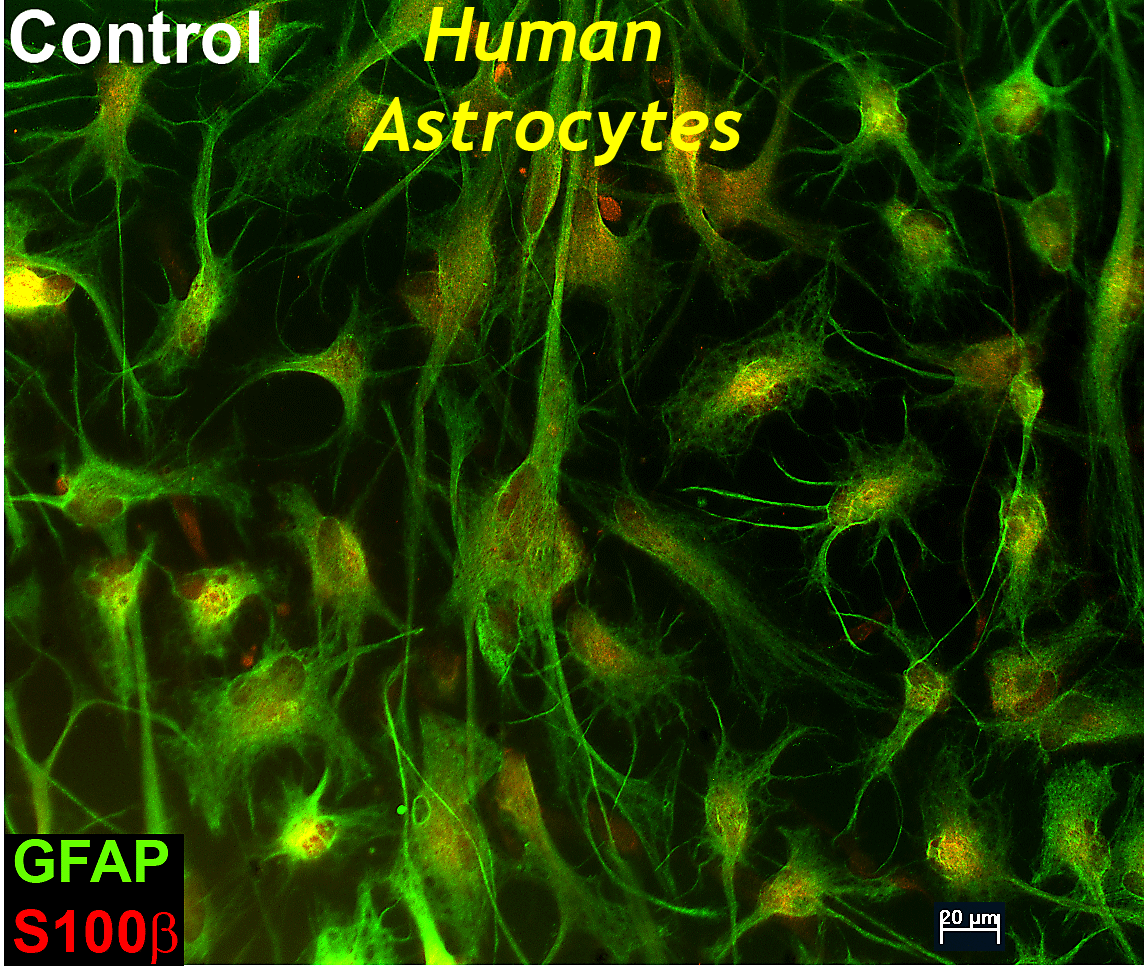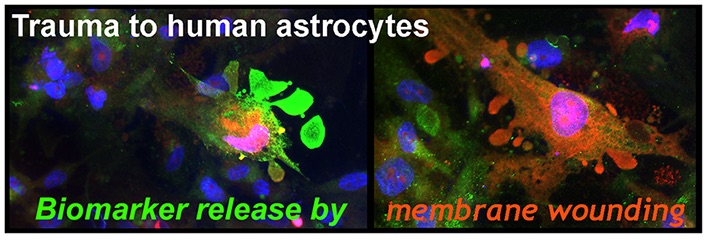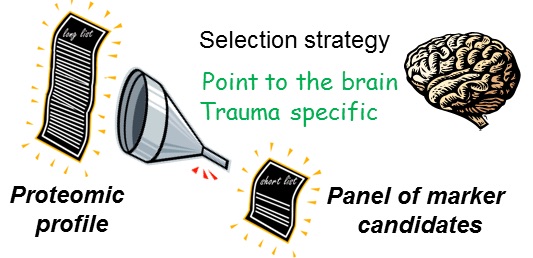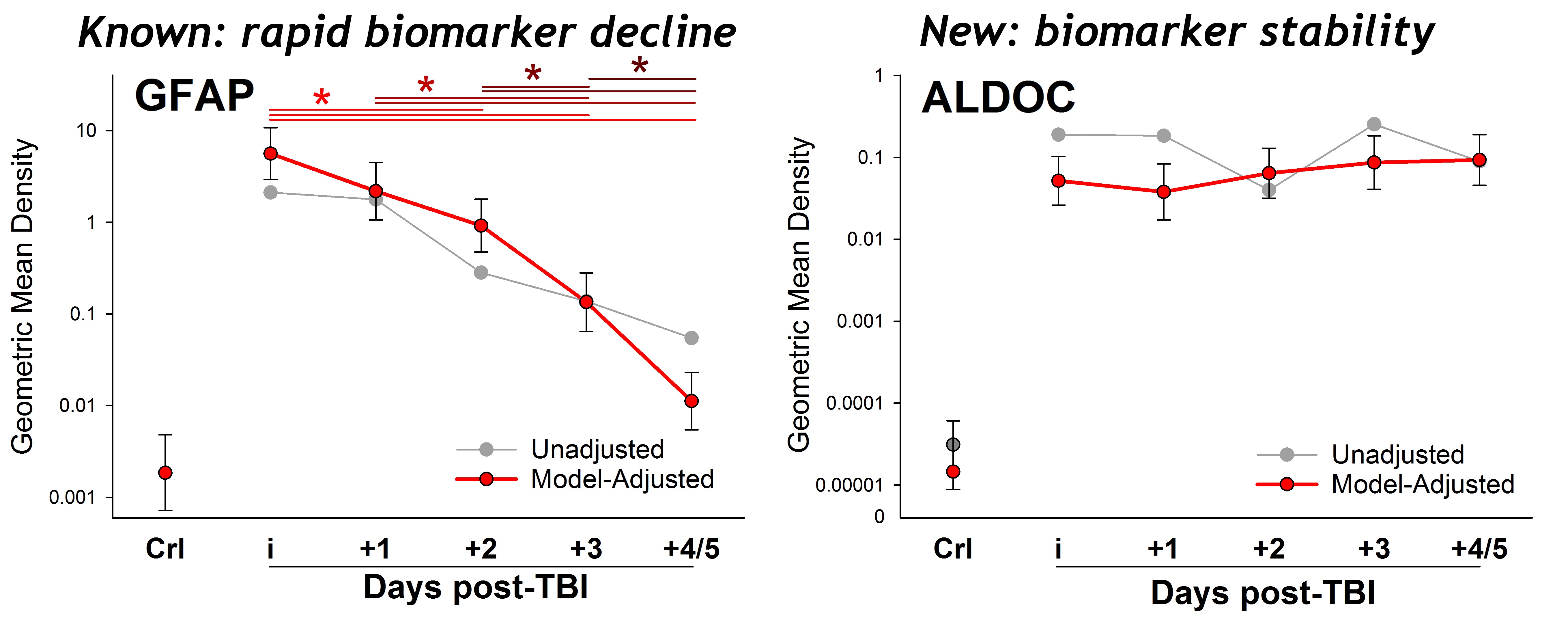

Astrocytes are star-shaped cells of the brain and spine that supply neurons with nutrients, regulate blood-flow based on neuronal network activity and homeostasis after injury. Healthy and reactive astrocytes are neuroprotective. Wounded astrocytes compromise brain metabolism and astrocyte loss disrupts the neuro-vascular unit. That’s why it is our goal to rescue wounded astrocytes after traumatic injury in our simple human trauma culture model (Publications). Together with Astrocyte Pharmaceuticals and UCLA BIRC investigators we are testing an energy-boosting drug on wounded human astrocytes to restore the unmet energy needs after traumatic injury (TBI). The rescue of astrocytes is a new TBI treatment strategy that is neuroprotective. This project along with novel imaging modalities in TBI patients monitoring metabolic compromise are funded by the Dana Foundation.

Neurological deficits are rooted not only in death of CNS cells but also in their functional compromise. To improve current tools for evaluating patients with traumatic brain and spinal cord injuries we need to go beyond detecting lesions and tissue loss. We are tracking astrocyte injury and demise to sensitively inform us on the state of a traumatic injury. We conducted extensive proteomic screens together with colleagues in Biochemistry on biofluids after trauma in our model and in TBI patients and then selected astrocyte enriched proteins (Publications) (http://loolab.chem.ucla.edu/index.html; http://www.mic.ucla.edu/). Using our human trauma model we associated new biomarker candidates with cell membrane wounding, also called mechanoporation, or with cell death. This resulted in our novel panel of Astrocyte Injury-Defined, AID biomarkers. We since have been working with clinical and industry partners validating AID biomarkers for diagnostic monitoring of patients with traumatic brain injuries covering the entire spectrum from mild to severe including pediatric brain injuries and sports concussions (Collaborators).


Complexity of a traumatic injury to the brain or spine and the unstable condition of these patients challenge their neurological assessment. Acute objective tools to predict severity, injury types and recovery are paramount for doctors and families. We are combining AID biomarkers with MRI to arrive at novel insights of early after CNS injury (Collaborators). We are launching a 'first in man' clinical study to relate acute metabolic depression with overall injury burden and recovery after TBI RR hospital Neuro-ICU (www.dana.org/; https://montilab.psych.ucla.edu/; radiology.ucla.edu/our-faculty).
Together with military and Lovelace partners we determined that AID biomarkers associate well with MR imaging after contusion injury to the swine spinal cord (https://www.mrn.org/people/andrew-r-mayer/principal-investigators; http://www.usaarl.army.mil/ ). We discovered that very early levels of these markers were able to predict the unfolding injury burden. We also found that our biomarker signals just minutes after injury accurately prognosticated which animals would recover walking or stayed paralyzed. Further, MRI and biomarkers combined detected injury exacerbation caused by postinjury transportation on rough roads that mimicked casualty evacuation in theatre (manuscripts in preparation). This is a need for pre-hospital care of patients with head and spine injuries and was funded by the DOD (http://www.usaarl.army.mil/; https://www.mrn.org/people/andrew-r-mayer/principal-investigators).
Together with the Harris lab and Tiffany Greco we are going to measure changes in MRI, new astroglial markers and metabolism after brain injury using mild to moderate rat controlled cortical impact (CCI) and repeated closed head injury (rCHI) models in mouse and rat (http://neurosurgery.ucla.edu/brain-injury-research-center-birc; ) . Our goal is to establish the use of AID biomarkers and MRI in these rodent injury models to better assess injury types, severity and recovery with the same non-invasive tools that are used in patients. This is called a reverse-translational approach funded by the NIH in a cooperation award.